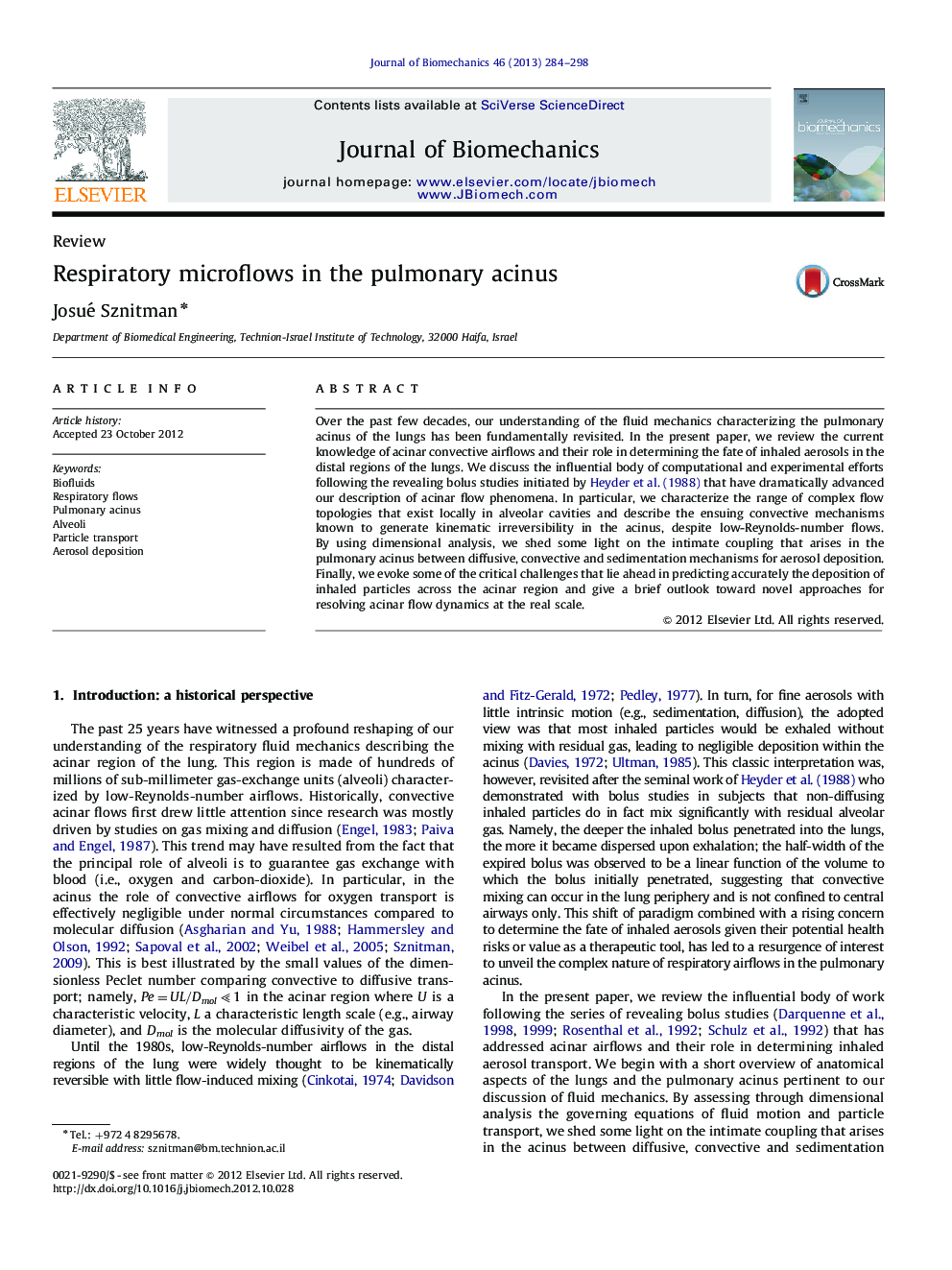| Article ID | Journal | Published Year | Pages | File Type |
|---|---|---|---|---|
| 872130 | Journal of Biomechanics | 2013 | 15 Pages |
Over the past few decades, our understanding of the fluid mechanics characterizing the pulmonary acinus of the lungs has been fundamentally revisited. In the present paper, we review the current knowledge of acinar convective airflows and their role in determining the fate of inhaled aerosols in the distal regions of the lungs. We discuss the influential body of computational and experimental efforts following the revealing bolus studies initiated by Heyder et al. (1988) that have dramatically advanced our description of acinar flow phenomena. In particular, we characterize the range of complex flow topologies that exist locally in alveolar cavities and describe the ensuing convective mechanisms known to generate kinematic irreversibility in the acinus, despite low-Reynolds-number flows. By using dimensional analysis, we shed some light on the intimate coupling that arises in the pulmonary acinus between diffusive, convective and sedimentation mechanisms for aerosol deposition. Finally, we evoke some of the critical challenges that lie ahead in predicting accurately the deposition of inhaled particles across the acinar region and give a brief outlook toward novel approaches for resolving acinar flow dynamics at the real scale.
